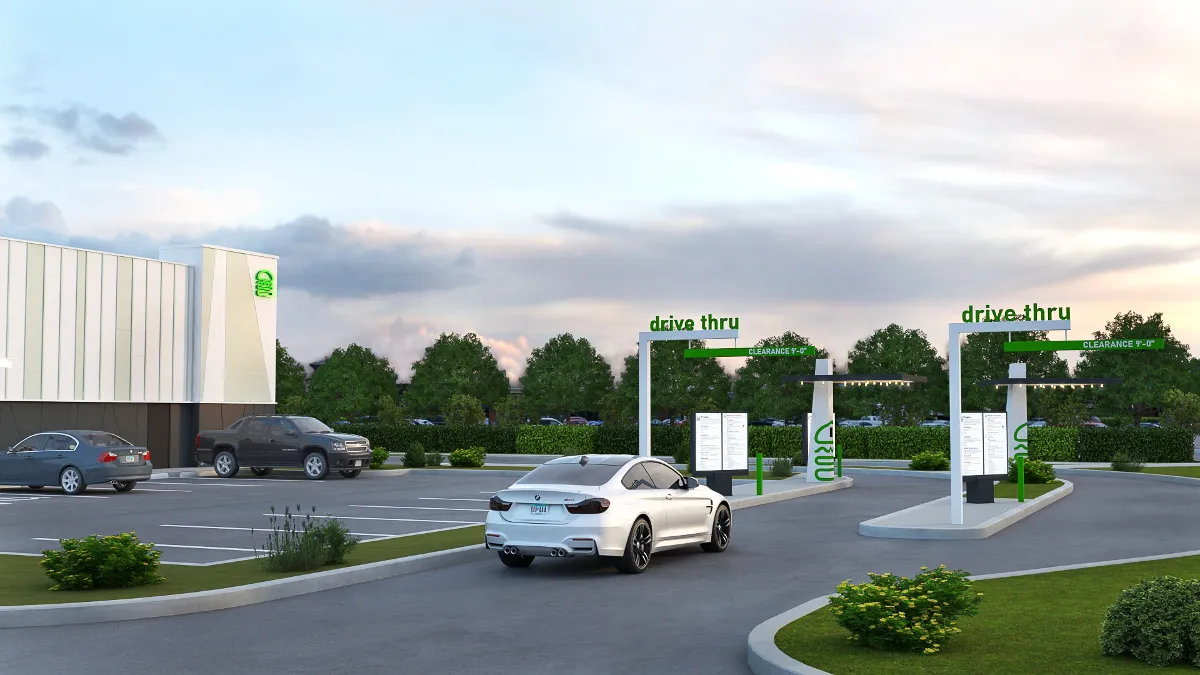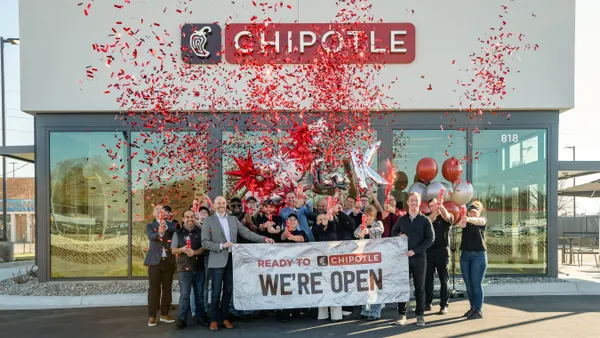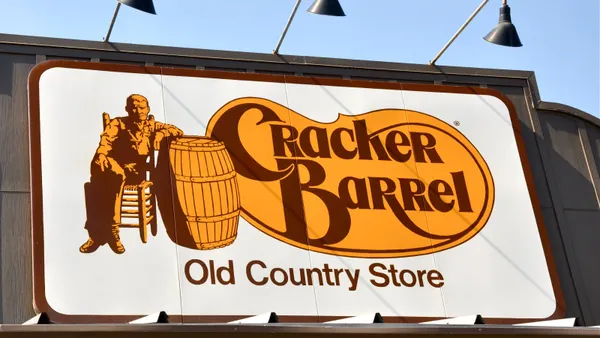Dive Brief:
- Shake Shack plans to have 20 to 25 drive-thrus open by the end of 2023, the company said in a shareholder letter released Thursday. The company currently has six drive-thrus open.
- These drive-thru locations had over $80,000 average weekly sales over the last four months. Comparatively, a regular Shake Shack has average weekly sales of about $76,000.
- The brand, which reached 400 units this week, plans to lean heavily into new formats in the future including drive-up, curbside and drive-thrus, executives told investors Thursday.
Dive Insight:
Shake Shack, which developed a remodel plan in 2020 when its core urban restaurants saw significant slumps in same-store sales during lockdowns, is making progress with its drive-thru plans. The company opened its first drive-thrus in Maple Grove, Minnesota, late last year as it targeted suburbs for this format, Shake Shack CEO Randy Garutti previously told investors.
But building drive-thrus presents its own challenges, particularly in the current economic environment, with soaring construction and labor costs, as well as supply chain constraints.
While the format produces higher sales, it also requires more capital and a longer time to build out, Garutti said. In the short-term, Shake Shack will be operating with higher build-out costs and lower restaurant level operating profits. Full drive-thru build-outs, for example, have increased this year’s development costs by 15%, Garutti said, adding that he expects this to go up over time with the company planning to build more drive-thrus for decades.
“We expect to continue to have strong returns even at elevated levels of construction costs for the environment plus this model,” said Garutti. “But that said, you know, we are also going to keep hopefully targeting stronger AUVs and profits over the long run.”
In the past, restaurants typically opened within 12 to 15 months, but are now averaging about 15 to 18 months, with drive-thrus taking longer because of permitting and other issues associated with this format, Garutti said. Many of the delays are also beyond the company’s control. For example, some restaurants are waiting for air conditioning units or a walk-in cooler.
In the long-term the company expects to consistently outperform average unit volumes, which the company believes will help open up new market opportunities, Garutti said.
With drive-thrus focused on convenience, customers tend to come more often than a traditional suburban format, Garutti said. About half of customers use the drive-thru, with the other half using other channels to order and receive their food.
While the company will also be more heavily focused on suburban development, where drive-thrus tend to thrive, it won’t be abandoning urban markets and will still open new restaurants in these locales, as well as enter new markets, Garutti said.
“We target a robust pipeline, it’s going to be diverse. It’s going to have a lot of formats and it’s going to take on lots of trends that will help balance the portfolio over time,” Garutti said. “The imbalance of our portfolio toward heavy urban centers, traditionally, has been a challenge for us.”












